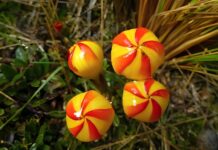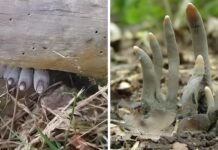Big eats little, little eats even smaller, even smaller eats…. well, you get the idea. And at the bottom of the chain are plants that seem to need only water and sunlight to survive.
But nature is never simple. Because underneath all that serene, seemingly harmless foliage, there are a whole host of carnivorous specimens that not only consume flesh (to provide much-needed nutrients not found in the soil), but also employ sophisticated, innovative, and even predatory means to ensnare their prey.
Venus flytrap
Perhaps the most famous carnivorous plant in the sundew family, Venus flytrap is far more clever than you might imagine. The leaf has a pine-like hinge, the edge of which is studded with spiny “teeth” and a row of highly sensitive hairs. When an insect lands and comes into contact with these hairs, the trap snaps shut. The writhing motion of the trapped prey stimulates enzymes that digest the insect over several days. The plant is so sophisticated that it can even detect stimuli that are not prey, such as raindrops.

Yellow pitcher plant
The carnivorous plant family, known as pitcher plants because of their shape, use modified leaves that form a tube-like structure to attract insects, which they then capture and digest. The yellow pitcher plant, native to the southern United States, is a particularly conspicuous example of this species, which can grow up to three feet tall.4 Insects are attracted by its bright color as well as by a nectar that also contains a toxin that incapacitates them. The waxy walls of the tube ensure that the insects slide to the base, where they are quickly killed by digestive fluids.
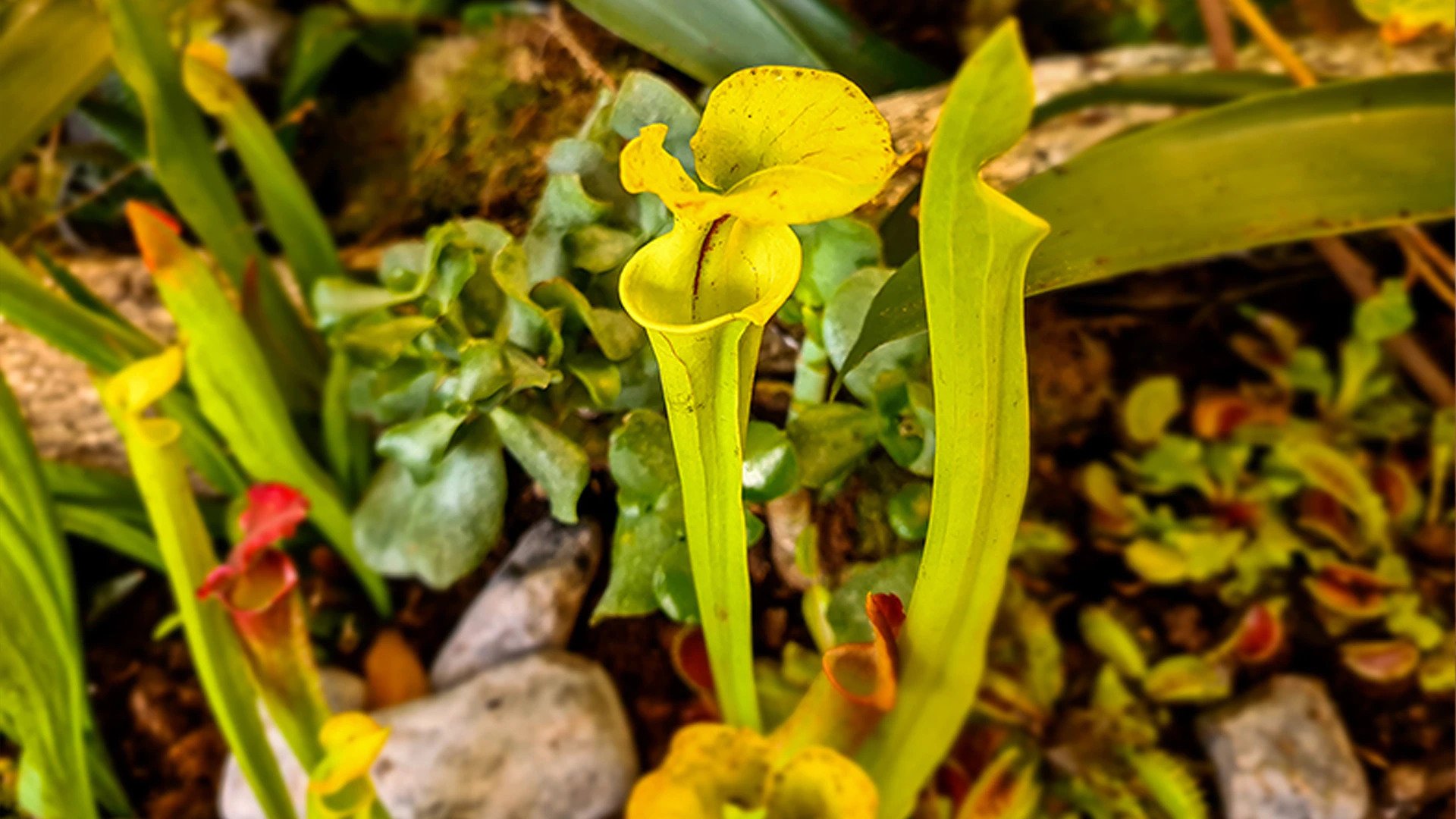
Nepenthes rajah
This plant of the carnivorous pitcher plant group is commonly known as the “monkey cup” because primates have been observed drinking from the leaves when thirsty. Native to Borneo, Nepenthes rajah is one of the largest carnivorous plants in the world. This deadly plant can grow up to six meters long and consume up to three liters of water and two and a half liters of digestive juices. Because of its enormous size, it not only feeds on invertebrates, but also attracts frogs, lizards, birds, and even rats to its interior, where they are dissolved in acid. It has also developed an unusual symbiotic relationship with the local mountain shrew. The shrew feeds on the plant’s nectar and then defecates into the pitcher to provide it with much-needed nitrogen.
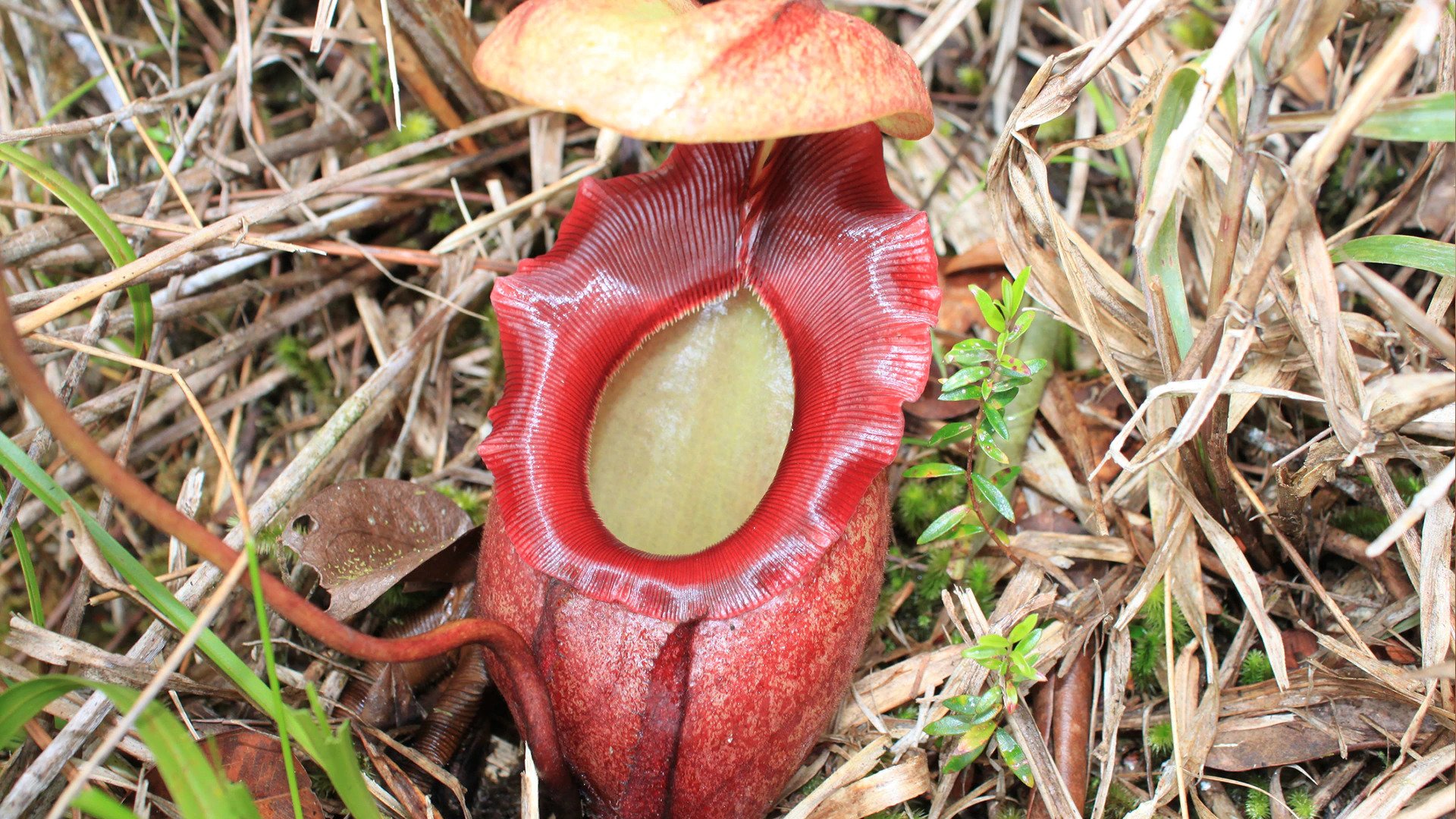
Drosera pulchella
Unlike the mighty rajah, the tiny Drosera pulchella, the dwarf sundew, is found in southwestern Australia. Although they are only 15-20 mm in size, they are nevertheless ferocious carnivores. They attract their prey by secreting a sweet-smelling secretion from the tentacle-like appendages at the ends of the leaves. This attracts insects, which quickly attach before the tentacles contract and cover them with the mucus. The insect is then slowly digested over several weeks.
Large floating bladderworts.
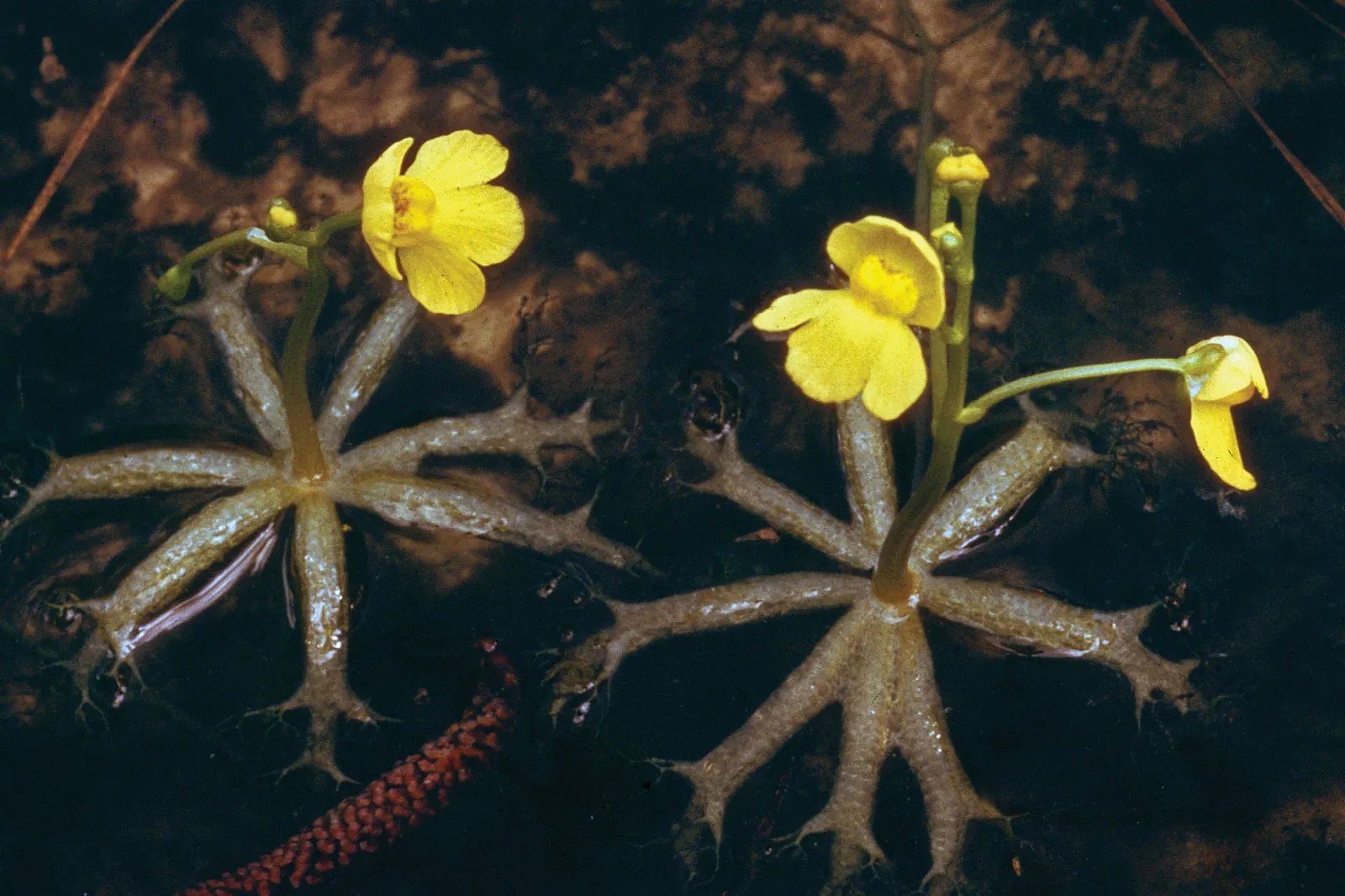
Bladderworts use a very different method to catch their prey. Found in ponds, lakes and streams, the “trigger” hairs on the surface of their “bladders” (small hollow sacs) are released when prey swim by. When the bladder opens, water rushes in and carries the prey away. It all happens in less than a millisecond-more than 100 times faster than the Venus flytrap. Found in the southeastern United States, the large, swollen or inflated bladder plant is, as its name implies, one of the largest, with stems growing up to six feet long. Its size alone threatens native plants and insects as this invasive carnivorous plant invades large bodies of water.
Gorgon Thaustock
While some carnivores, like the Venus flytrap, look quite fearsome, others seduce their prey with innocence. This slender-leaved shrub, found in South Africa’s Western Cape Province, looks somewhat deceptive. Also known as a flycatcher shrub, it has “tentacles” that secrete a sticky resin to catch its prey. But the plant doesn’t then eat the insect. Instead, it waits for a jumping tree bug called Pameridea roridulae to eat the prey while the plant enjoys the nutrients contained in the droppings the bug leaves behind.
Albany pitcher plant
Native to Western Australia, the Albany Pitcher Plant (also known as the Western Australian Pitcher Plant) is unique among carnivorous plants. It is the only species in the genus Cephalotus and is considered an example of convergent evolution, meaning that it has evolved similar characteristics to other organisms without being related to them. In fact, the plant is more closely related to cabbage and roses than to other pitcher plants. But like them, it has a tub-shaped leaf – or “pitcher” – with a lid that keeps the rain out. Insects are lured inside by the red and white coloring, but sharp, tooth-like spines on the edge keep them from getting back out. Eventually, they slide to the bottom of the jar, where they are digested in a pool of enzymes.
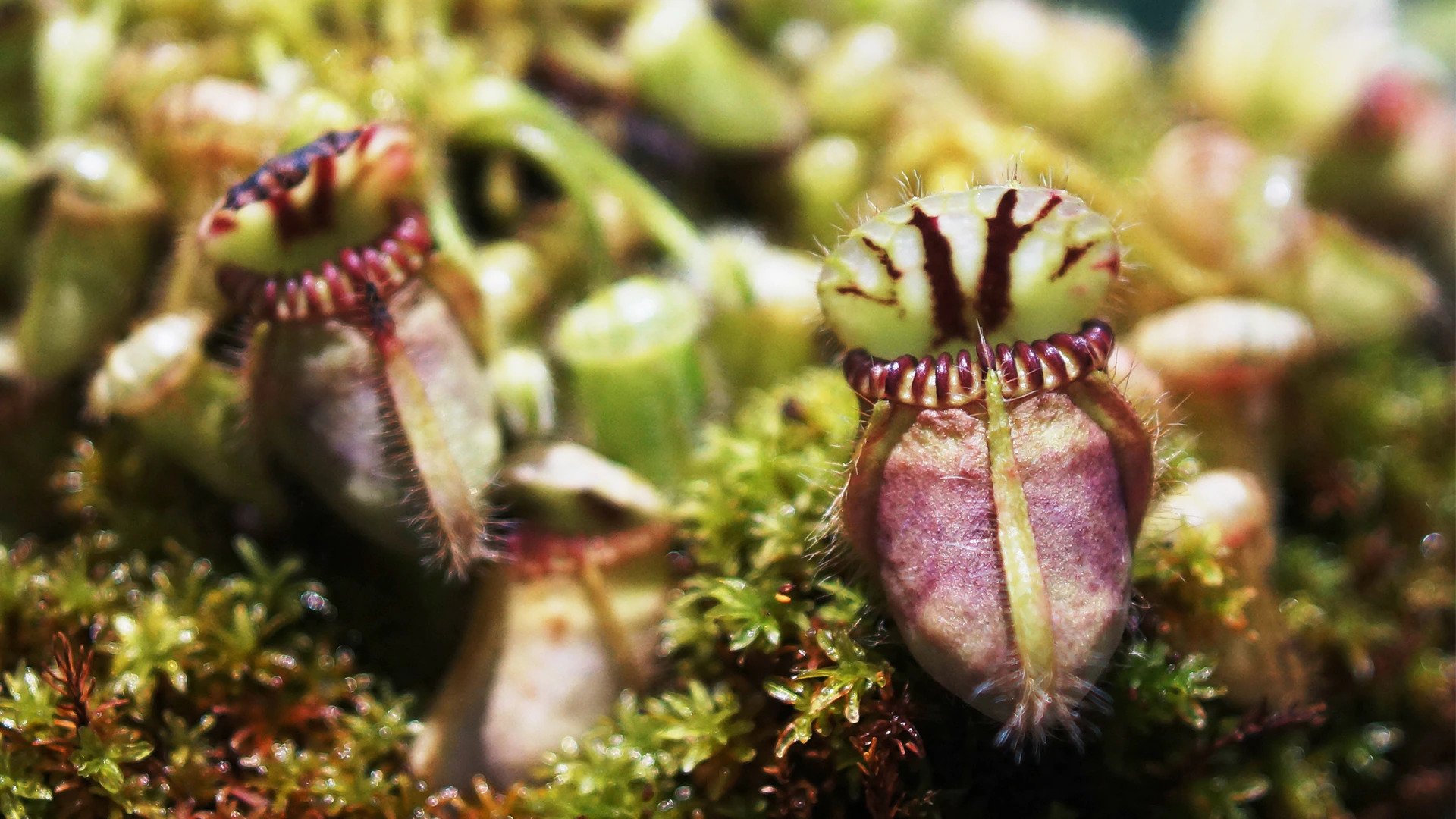
Brocchinia Reducta
Bromeliads are the plant family that includes the pineapple and some popular, colorful houseplants. But they also have some carnivores among them. There are three carnivorous bromeliads, including Brocchinia reducta, which grows in South America. As with other bromeliads, a leaf rosette serves as a water reservoir. This flower-like shape is thought to attract insects, as does a coating that reflects UV light. And to be sure, the plant also secretes an enticing, sweet scent to attract its dinner. The insects that are attracted and trapped will tire and drown before eventually decomposing into a “nutrient soup.”
Cobra Lily
This member of the pitcher plant family was so named because it looks strikingly similar to the rearing head of a cobra. A forked leaf adds to the snake symbolism because it has a pronounced tongue or fang. It also uses nectar to attract unsuspecting insects, but it has another devilish trick up its sleeve. Transparent spots on the cap above the leaf tube lead prey to believe that this is a way back to safety. But the insect’s futile attempts to escape only cause it to struggle even more and tire more quickly. Unlike other predatory plants, cobra lily produces bacteria – not digestive enzymes – to break down prey for ingestion.
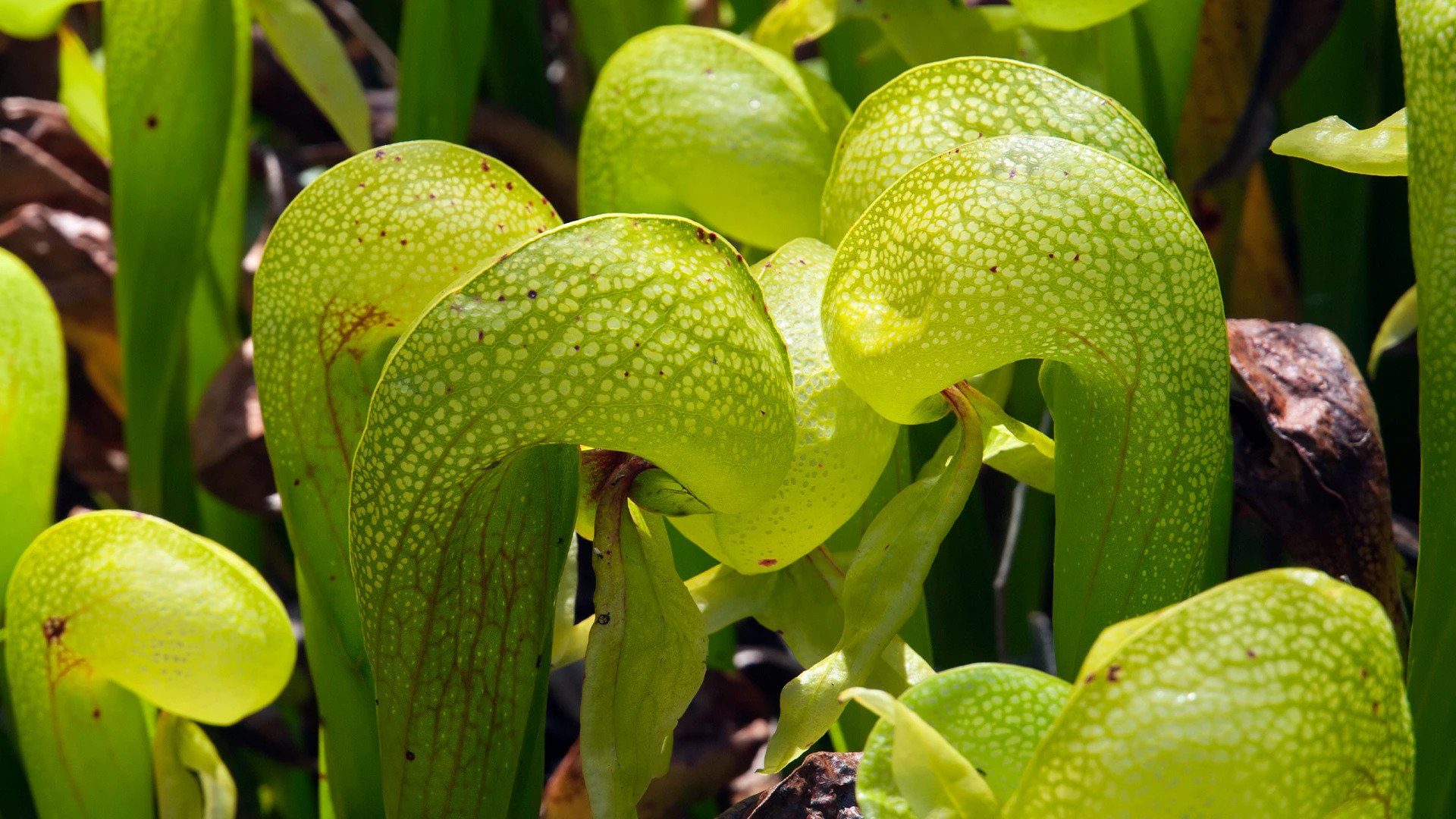
Triphyophyllum peltatum
Possibly competing with Nepenthes rajah for the crown of the world’s largest carnivorous plant, Triphyophyllum peltatum grows on a long stem that can be up to 50 meters long and 10 cm thick.20 This incredibly rare species is an absolute curiosity, and its carnivorous nature was not recognized until 50 years after its initial discovery. This sophisticated plant, native to tropical West Africa, has a complex life cycle.21 Before flowering, the plant produces a tendril-like leaf with a sticky surface that traps and sucks up insects. But after flowering, it abandons its predatory habits and evolves into a non-carnivorous, climber-like plant.



